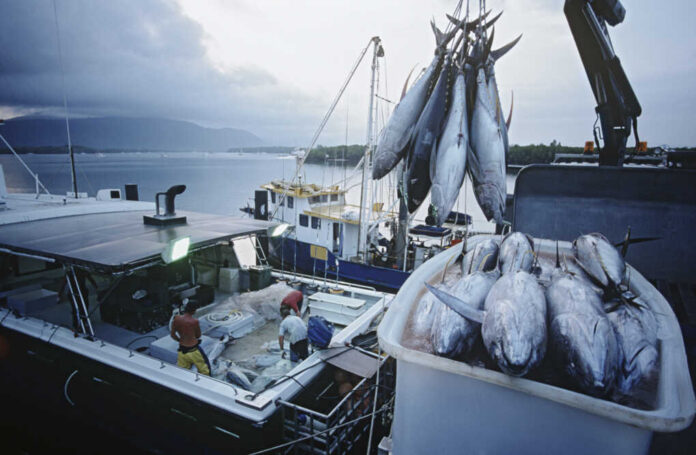
Mercury, a harmful substance, is naturally found in the ocean and fish due to pollution. Larger fish, like tuna, tend to have higher mercury levels because they eat smaller fish that accumulate mercury.
Tuna is a popular choice for many people, including kids and adults, and is often eaten canned. However, mercury contamination in tuna is a significant concern, especially for pregnant women and children, as mercury can harm developing brains and nervous systems.
The FDA advises pregnant women to limit their intake of certain types of tuna to avoid excessive mercury exposure. Despite this guidance, many people are unaware of the varying levels of mercury in different types of canned tuna.
Tuna is a widely consumed seafood known for its protein content. However, it can accumulate high levels of methylmercury by consuming contaminated prey.
Despite attempts to decrease mercury emissions, a study published in ACS’ Environmental Science & Technology Letters found that mercury levels in tuna have remained unchanged since 1971. The researchers suggest that more stringent emission reduction goals are necessary to lower mercury levels in tuna.
Should You Be Concerned About Mercury Levels in Your Tuna?
Canned tuna is a common food found in many kitchens and lunchboxes. It’s easy to prepare and full of protein and healthy fats. A recent survey found that many Americans eat tuna regularly.
But there’s something to watch out for mercury. Tuna, like other fish, can contain mercury, which can be harmful, especially for kids and pregnant women.
To learn more about this, a group called Consumer Reports tested different brands of canned tuna for mercury levels. They found that some types of tuna have more mercury than others. Light and skipjack tuna generally have less mercury compared to albacore tuna.
Understanding Mercury Pollution and Tuna Contamination
Mercury pollution from human activities like burning coal and mining has decreased due to environmental protection policies. However, methylmercury, a toxic chemical affecting the nervous system, still poses risks, especially to unborn babies and young children.
Research on Tuna Mercury Levels
Researchers conducted a study to analyze trends in mercury levels in tuna over the past 50 years and assess the impact of environmental policies on oceanic mercury concentrations.
The study compiled data from nearly 3,000 tuna muscle samples collected from the Pacific, Atlantic, and Indian Oceans between 1971 and 2022. The focus was on tropical tuna species—skipjack, bigeye, and yellowfin—which represent the majority of global tuna catches.
Despite a decrease in airborne mercury globally, mercury concentrations in tuna remained stable worldwide from 1971 to 2022, except for a spike in the northwestern Pacific Ocean in the late 1990s.
The static mercury levels in tuna are attributed to the upward mixing of “legacy” mercury from deeper ocean waters into shallower depths, where tropical tuna reside. This legacy mercury, emitted years or decades earlier, does not reflect recent reductions in atmospheric emissions.
Mathematical models simulating various environmental policies suggest that even the most restrictive emission policy would take decades to influence oceanic mercury concentrations, with drops in tuna levels following later.
The study underscores the need for aggressive global efforts to reduce mercury emissions and long-term monitoring of mercury levels in oceanic life. Continuous efforts in these areas are essential to safeguarding human health and environmental well-being.


















